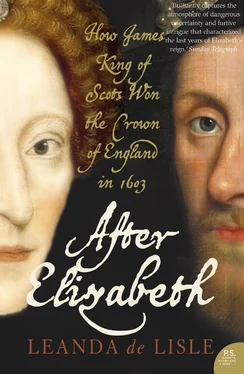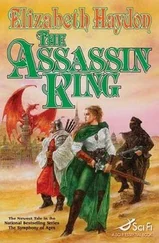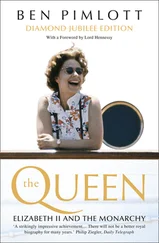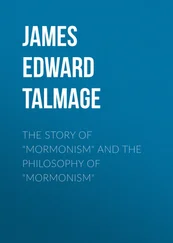1 ...8 9 10 12 13 14 ...23 By August Elizabeth’s pains had gone to her hip. Defiantly she continued to hunt every two or three days but a Catholic spy writing under the name ‘Anthony Rivers’ reported that a countrywoman who saw her on her progress had commented that the Queen looked very old and ill. A guard terrified the woman by warning that ‘she should be hanged for those words’. Courtiers, however, were less easily intimidated and whispers about the succession were on everyone’s lips. 69 The spy described how James’s agents were working hard to gather support from powerful families offering ‘liberty of conscience, confirmation of privileges and liberties, restitution of wrongs, honours, titles and dignities, with increase according to desert etc’. Individuals were responding with shows of affection: ‘for the most part it is thought rather for fear than love’. He named Cecil as one such, adding, ‘all is but policy it being certain he loves him as little as the others’. 70 It is now believed that the spy ‘Rivers’ was William Sterrell, Secretary to the Earl of Worcester, which would have placed him at the heart of Elizabeth’s court. 71 His letters to Persons and others make it clear that few actively wanted a Scots king and he reported that a group of courtiers were planning to marry Arbella Stuart to Beauchamp’s seventeen-year-old elder son, Edward Seymour ‘and carry the succession that way’. To all outward appearance, however, it was business as usual.
In October 1602, Cecil entertained Elizabeth at his new house on the Strand and presented her with ten gifts, mostly jewels. She left in excellent spirits, refusing any help to enter the royal barge. As she climbed aboard, however, she fell and bruised her shins badly. It left her in considerable pain. She began to talk of moving from Whitehall to the comforts of Richmond Palace, but in the end the lassitude of depression had kept her at Whitehall where Harington had found her weeping at Christmas.
Now that Elizabeth’s godson was certain she was dying he intended to follow the Tract on the Succession sent to James in Scotland with a New Year’s gift, the traditional time for giving presents. He designed a lantern constructed as a symbol of the dark times of Elizabeth’s last years and the splendour that was to come with James’s rising sun. It was engraved with the words: ‘Lord remember me when thou comest into thy kingdom,’ and a little underneath, ‘After the cross, light.’ 72
*Elizabeth, who was conservative in religious matters, wanted a single man as her senior cleric. After Whitgift’s appointment Harington recalled how Whitgift had always cut a dashing figure. When he was Bishop of Worcester, he would arrive at Parliament attended by large numbers of retainers in tawny livery. When another bishop asked how he could afford so many menservants he quipped ‘it was by reason he kept so few women’ – a reference to the fact he had remained unmarried (Harington, State of the Church , pp. 7–8).
*Thomas Wilson had also observed that the law against foreigners inheriting the English throne need not apply to James if it ‘be alleged that the King of Scots is no alien, neither that Scotland is any foreign realm, but a part of England, all be it the Scots deny it’ (Wilson, State of England in 1600 , p. 8).
*It was, perhaps, because Elizabeth was seriously ill with smallpox in 1562 that she did not think to ensure that Edward and Catherine were kept apart in the Tower. In consequence another ‘illegitimate’ child, Thomas, was born on 10 February 1563. Edward was fined £15,000 and Elizabeth saw to it that he never saw Catherine again.
*Mary Grey married in 1565. Within months it was discovered and she was placed in custody until her husband died, after which she lived an impoverished and childless life until her own death in 1578.
*The subsequent ruin of many Catholics was remembered in the 1930s as the Vatican considered how best to confront Adolf Hitler. Voices recalled the terrible effects of the bull and the Pope backed off from issuing a condemnation of Nazism (Diarmaid MacCulloch, Reformation: Europe’s House Divided , p. 334).
*Puritans wanted to see the restitution and continuation of Edward VI’s reforms, dispensing with ‘papist’ rituals such as the cross in baptism and instituting sermons in order to achieve a more godly church and society.
*Though the bleeding from the stomach might equally have been caused by stomach cancer or an ulcer, or a result of porphyria inherited through his mother Eleanor Brandon.
†The Earl’s followers had approached the King as early as 1589, but James had not shown any interest in Essex’s offers of loyalty until he had his place on the Privy Council.
*The name probably represented a team of writers.
*One of Philip II’s last actions had been to create the new kingdom of the Netherlands. The Spanish had been fighting the Dutch rebels in the Netherlands for twenty-five years without making progress. Philip hoped that a sovereign state that included the France-Comte of Burgundy, as well as the Netherlands south of the Maas and Waal, would be better able to defeat the Dutch rebels and would remain allied to Spain. He planned to marry Isabella to her first cousin, the Archduke Albert, who was already Governor of the Netherlands. The Act of Cession creating the kingdom was made on 6 May 1598 and that autumn, shortly after Philip’s death, the Infanta married Albert.
*His daughter, Frances Devereux, Duchess of Somerset, wore it along with his ruby earring when she sat for a portrait by Vandyke, both of which are still preserved at Ham House. Her husband was Lord Beauchamp’s younger son, William Seymour.
CHAPTER TWO
‘A babe crowned in his cradle’
The shaping of the King of Scots
WILLIAM SHAKESPEARE is said to have written Macbeth to flatter James. It certainly did not flatter Scotland. The play, which was first performed in 1606, depicted a violent, medieval country inhabited by witches. It was supposedly set in the eleventh century but as Shakespeare knew, many at the English court believed the picture held true of the Scotland of their day – and not without some reason. For the most part Scottish society was divided between feudal lairds and their tenantry. What meagre surpluses the land produced were used to feed the lairds’ private armies before any remainder could be traded in the towns. These consequently remained small and trade was underdeveloped, while an inordinate amount of energy was expended on the detection and killing of witches. There were, however, signs of growing wealth and improvement. 1
The thirty-six-year-old James VI had been King of Scotland for almost as long as Elizabeth had been Queen of England, and his reign had brought a measure of peace to what had been a notoriously volatile country. In 1598 legislation was carried through the Scots parliament that encouraged the resolution of feuds through the royal courts. With it the tradition of the feud began to die out and by January 1603 James’s efforts were culminating in the resolution of one of the last of the great feuds: that between George Gordon, the sixth Earl of Huntly, and Huntly’s enemies, the Earls of Argyll and Moray. A marriage between their children was set for the following month. This lessening civil disorder had allowed trade to improve and in the towns stone houses were gradually replacing those of wood. Although witches were being strangled and burned in numbers never remotely matched in England, this too was considered an advance. Medieval Scotland had been comparatively lax with its witches, the true danger they posed having only been revealed by modern theological works to which Scotland’s highly educated King had himself contributed. Meanwhile at court, thanks in part to James’s patronage, Scotland had become a centre of cultural importance for poetry and music. There were also developments in the sciences, with John Napier of Merchiston, the discoverer of logarithms, already working on his inventions. 2
Читать дальше












